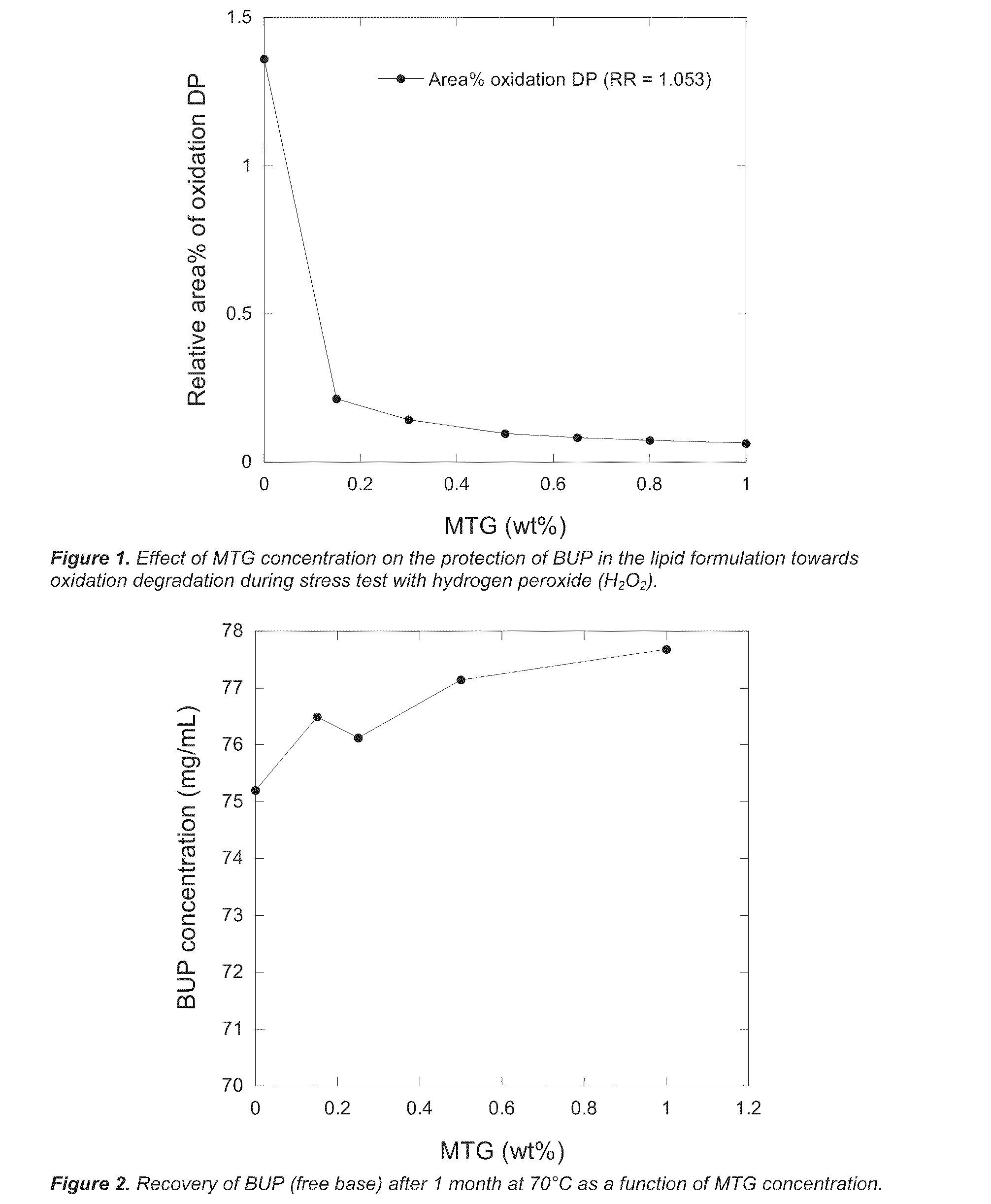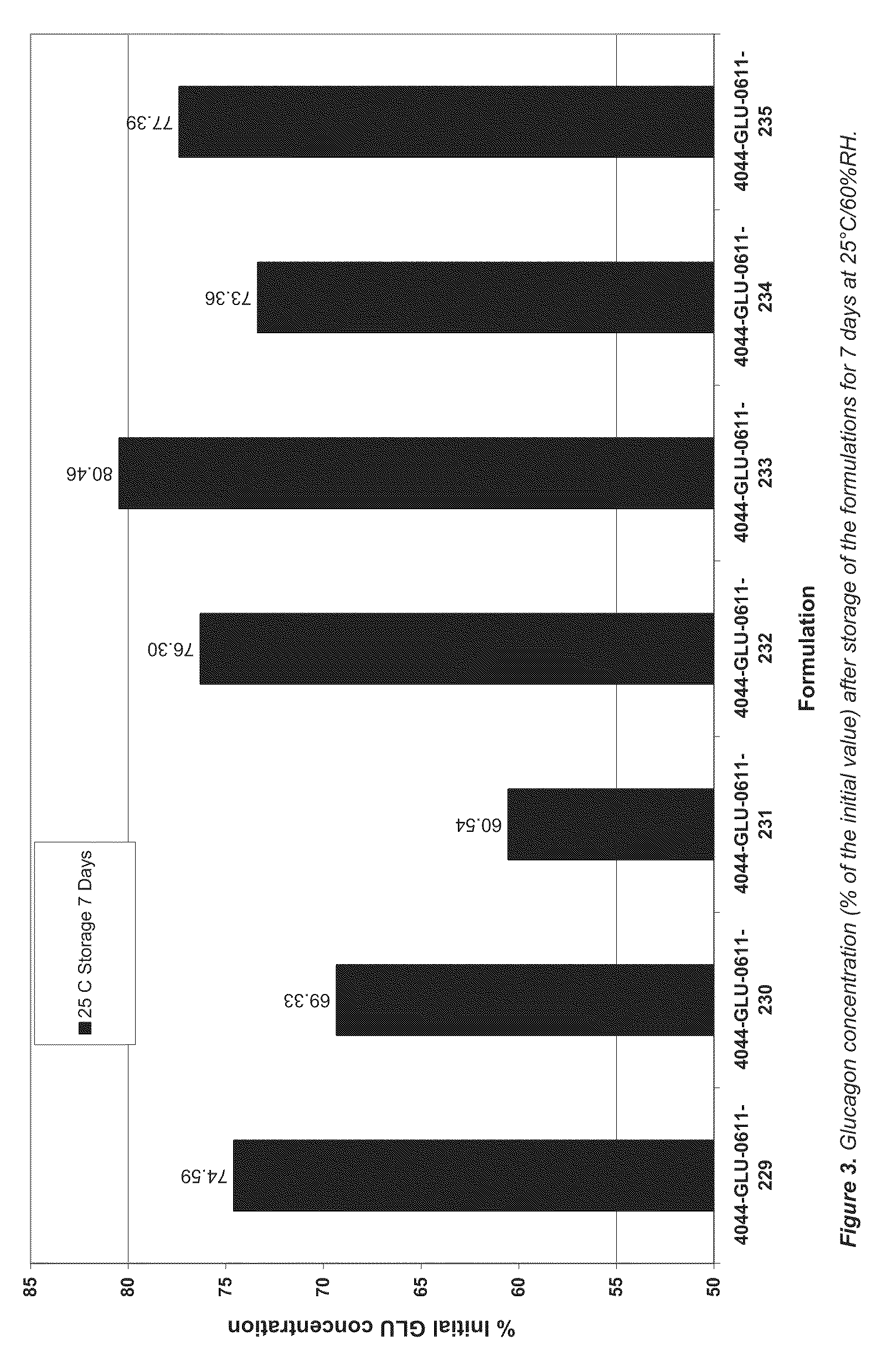Lipid formulations comprising a thiolated antioxidant
a technology of antioxidants and lipids, which is applied in the field of lipid formulations, can solve the problems of difficult, unsatisfactory or even dangerous effects, and the area of desired action may not remain accessible for repeated administration
- Summary
- Abstract
- Description
- Claims
- Application Information
AI Technical Summary
Benefits of technology
Problems solved by technology
Method used
Image
Examples
example 1
Effects of Different Antioxidants in Lipid Formulations of Buprenorphine (BUP)
[0114]Lipid formulations of BUP also containing antioxidant were prepared in the following way: First, a liquid lipid stock solution of SPC / GDO / EtOH / antioxidant (or a reference stock solution without antioxidant) in the required proportions were prepared by weighing of all components into glass vials followed by mixing by end-over-end rotation for about 8 h or until completely homogenous liquids were obtained. Thereafter, BUP (powder) was added to achieve a nominal concentration of 7.9 wt % in all cases. The final nominal compositions of the respective formulations are given in Table 1. The antioxidants were added in an amount corresponding to common previous use in pharmaceutical products.
TABLE 1Nominal compositions (wt %) of formulations studiedFormulationBUPSPCGDOEtOHMTGPGallTOCBHTA7.941.141.110.0————B7.940.640.69.91.1———C7.941.041.010.0—0.03——D7.940.940.910.0——0.3—E7.941.041.010.0———0.13
[0115]The follo...
example 2
Effect of Different MTG Concentrations
[0117]The protective effect of different MTG concentrations was assessed by performing a stress test according to Example 1. Briefly, to a lipid formulation of BUP with the nominal composition BUP / SPC / GDO / EtOH=7.9 / 41.1 / 41.1 / 10.0 wt % was added MTG at concentrations between 0-1.0 wt %. To the resulting formulations was added 20 μL H2O2 (30%) / mL formulation followed by equilibration for 48 hours at RT (dark). The formulations were thereafter analysed by HPLC as described in Example 1 and the relative area % of the main oxidation degradation product (DP) peak (relative retention RR=1.053) was determined. As shown in FIG. 1, already low concentrations of MTG had a significant protective effect.
example 3
Effect of Different MTG Concentrations on BUP Stability During Accelerated Stability Studies
[0118]Lipid formulations of BUP (nominal concentration 7.9 wt %) comprising different concentrations of MTG (0-1.0 wt %) were prepared as described in Examples 1 and 2. The formulations were filled in glass vials, the headspace flushed with nitrogen and the vials were capped with Teflon-coated rubber stoppers and tear-off aluminium caps. The vials were thereafter transferred to a heating cabinet held at 70° C. and stored for 1 month before HPLC analysis as described in Examples 1 and 2. As shown in FIG. 2, the addition of low concentrations of MTG increased the recovery of BUP from the stored samples.
PUM
| Property | Measurement | Unit |
|---|---|---|
| biological half life | aaaaa | aaaaa |
| biological half life | aaaaa | aaaaa |
| biological half life | aaaaa | aaaaa |
Abstract
Description
Claims
Application Information
 Login to View More
Login to View More - R&D
- Intellectual Property
- Life Sciences
- Materials
- Tech Scout
- Unparalleled Data Quality
- Higher Quality Content
- 60% Fewer Hallucinations
Browse by: Latest US Patents, China's latest patents, Technical Efficacy Thesaurus, Application Domain, Technology Topic, Popular Technical Reports.
© 2025 PatSnap. All rights reserved.Legal|Privacy policy|Modern Slavery Act Transparency Statement|Sitemap|About US| Contact US: help@patsnap.com



